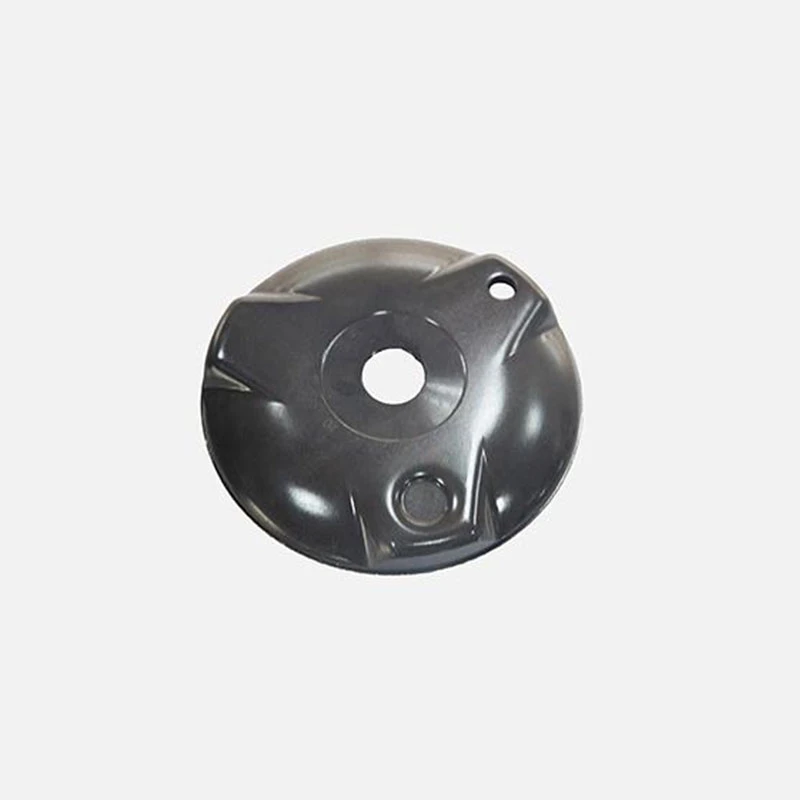aluminum sheet metal stamping
Aluminum Sheet Metal Stamping An In-Depth Exploration
Aluminum sheet metal stamping is a critical process utilized across various industries, from automotive to aerospace, electronics, and construction. This method leverages the unique properties of aluminum, combined with advanced stamping techniques to create precise, lightweight, and durable components. Understanding this process can illuminate its significance and application in today’s manufacturing landscape.
What is Aluminum Sheet Metal Stamping?
Aluminum stamping is a manufacturing process that involves the use of a die to cut and shape aluminum sheets into desired forms. This process can include bending, deep drawing, or forming, transforming a flat sheet of aluminum into a three-dimensional component. The stamping process is highly efficient, allowing for high-volume production while maintaining strict tolerances and complex designs.
Advantages of Aluminum Stamping
1. Lightweight One of the most significant advantages of aluminum is its weight. Compared to steel, aluminum is about one-third the density, making it ideal for applications where reducing weight is crucial, such as in automotive and aerospace components.
2. Corrosion Resistance Aluminum inherently resists corrosion due to the formation of a protective oxide layer when exposed to air. This property extends the lifespan of stamped components and reduces maintenance costs, making aluminum a preferred choice for outdoor applications.
3. Versatility Aluminum can be easily molded into various shapes and sizes, allowing for a broad range of applications. Stamping can produce everything from simple brackets to complex housings for electronics.
4. Conductivity With excellent thermal and electrical conductivity, aluminum stamped parts are often used in electrical enclosures and heat sinks in electronic devices.
5. Aesthetic Appeal Aluminum can be finished in numerous ways, including anodizing, painting, and polishing, providing options for aesthetics that can enhance the appearance of the final product.
The Stamping Process Explained
aluminum sheet metal stamping

The aluminum stamping process generally involves several key steps
1. Prototyping Before mass production, prototype parts are created to test and validate design specifications. This step allows for adjustments to be made, ensuring that the final product meets functional and aesthetic requirements.
2. Tooling Custom dies and stamping tools are designed based on the specific part being manufactured. The tooling is crucial, as the accuracy and quality of the stamp depend on well-made dies.
3. Stamping The actual stamping involves feeding aluminum sheets into a stamping machine, where the die is used to cut, bend, or form the metal. Different methods can be applied during this phase, including progressive, flatbed, and hydraulic stamping.
4. Finishing Once stamped, the parts undergo finishing processes such as deburring, polishing, and coating. These treatments enhance the appearance and increase the durability of the components.
5. Quality Control Throughout the production process, quality checks are conducted to ensure that each part meets specified tolerances and standards. This step is critical to maintaining product integrity.
Applications of Aluminum Stamping
Aluminum stamped parts are prevalent in many industries. In the automotive sector, they are used for components like chassis parts, brackets, and housings, contributing to weight reduction and improved fuel efficiency. In electronics, aluminum is often used for heat sinks and cases, taking advantage of its excellent thermal conductivity and lightweight properties.
In aerospace, the need for robust yet lightweight materials makes aluminum an ideal choice for various structural components. Furthermore, in the construction industry, aluminum stamping finds its application in window frames, roofing materials, and supports, showcasing its versatility.
Conclusion
Aluminum sheet metal stamping is an effective manufacturing process that offers numerous benefits, including lightweight construction, corrosion resistance, and versatility. As industries continue to pursue efficiency and sustainability, aluminum stamping plays a central role in developing innovative and practical solutions. Whether in automotive design, aerospace engineering, or consumer electronics, the impact of aluminum stamped components is vast and significant. As technology advances, the techniques and applications of aluminum stamping are likely to expand even further, solidifying its place in modern manufacturing.
-
Precision Sheet Metal Stamping Manufacturer | Fast & ReliableNewsAug.01,2025
-
OEM Sand Cast Pump Valve Fittings - Baoding Hairun Machinery And Equipment Trading Co., Ltd.NewsAug.01,2025
-
Custom OEM Impellers | High Efficiency & PrecisionNewsAug.01,2025
-
OEM Sand Cast Pump Valve Fittings - Baoding Hairun Machinery | Customization, Quality AssuranceNewsAug.01,2025
-
OEM Sand Cast Pump Valve Fittings - Baoding Hairun Machinery And Equipment Trading Co., Ltd.NewsAug.01,2025
-
OEM Sand Cast Pump Valve Fittings - Baoding Hairun Machinery And Equipment Trading Co., Ltd.NewsJul.31,2025















